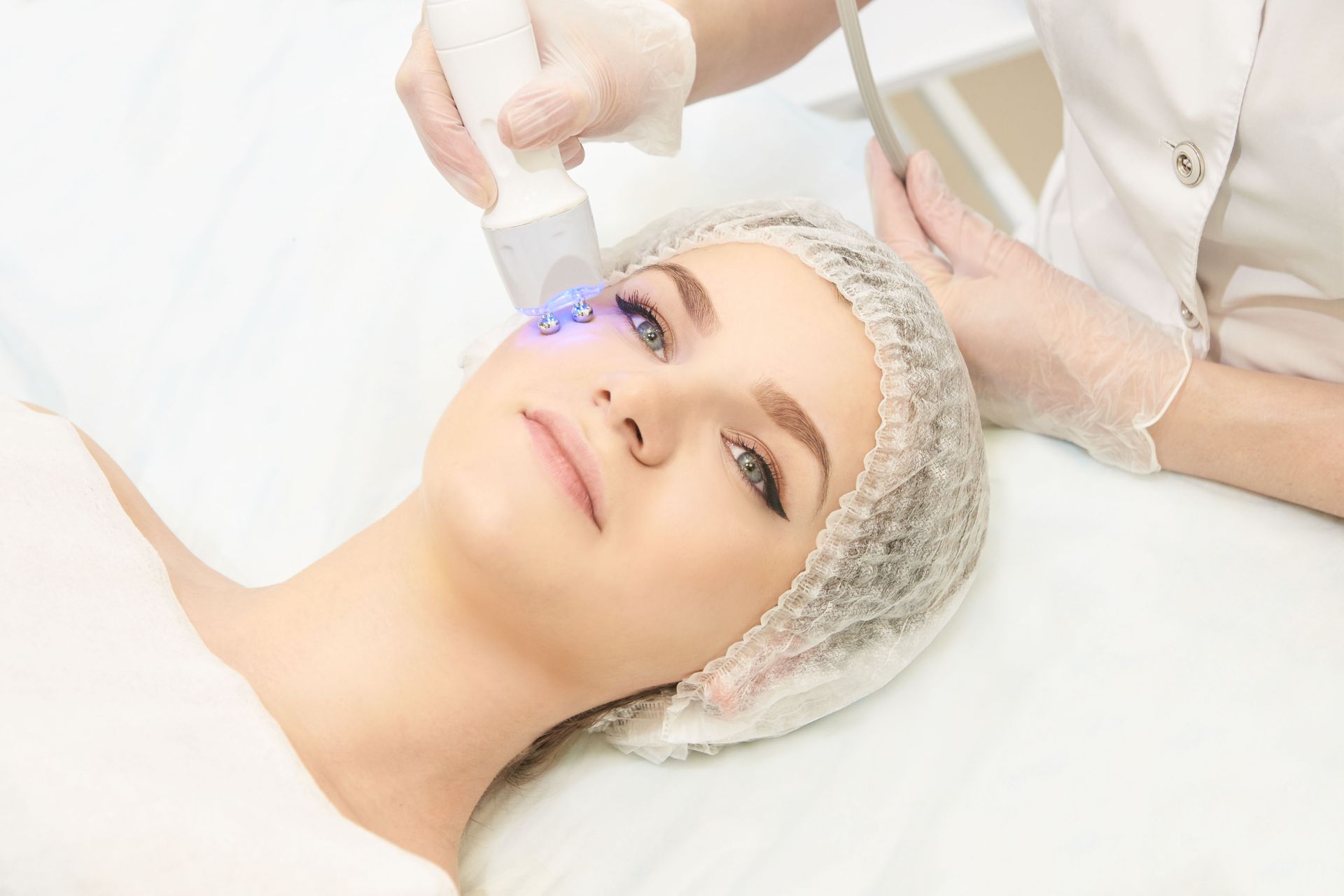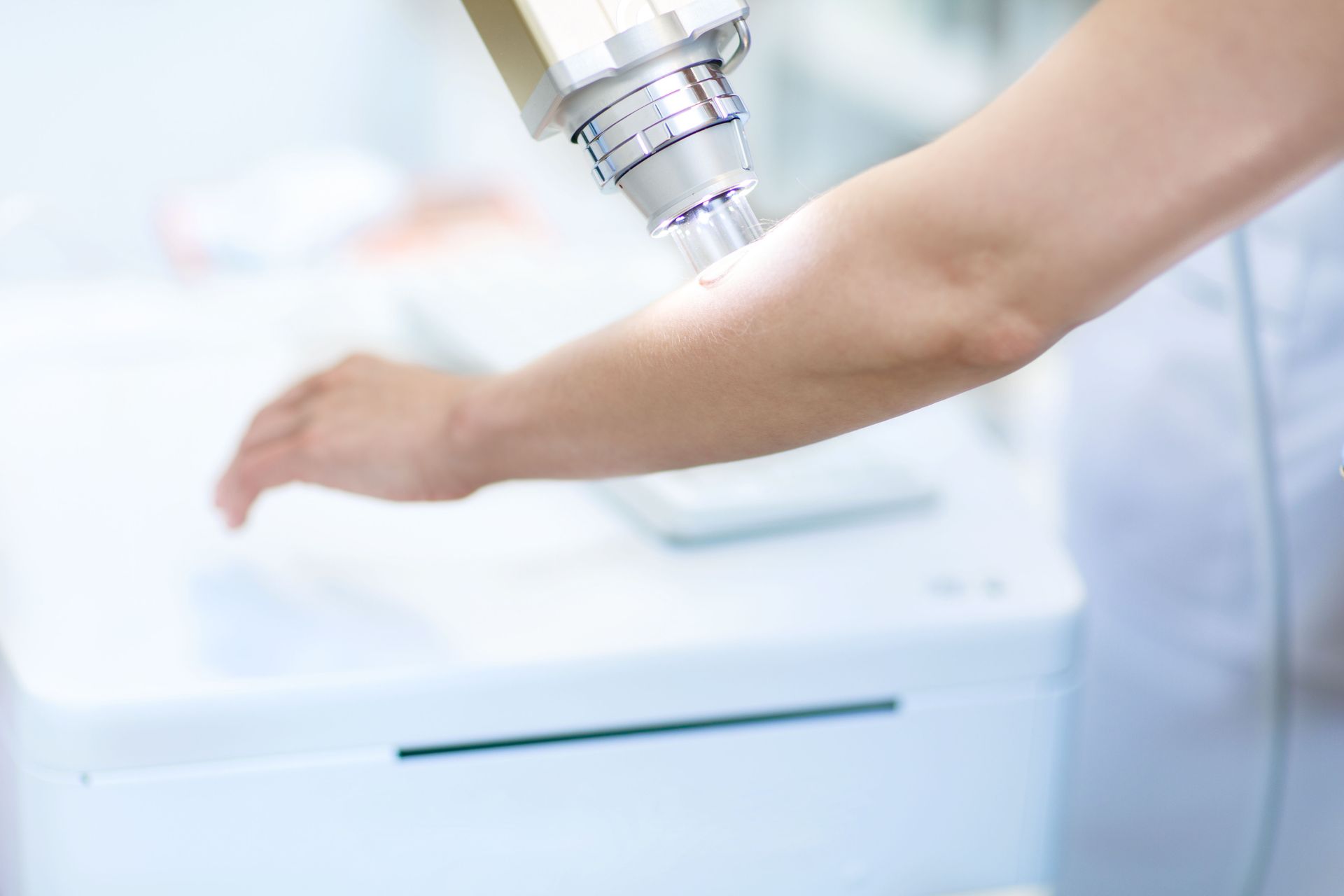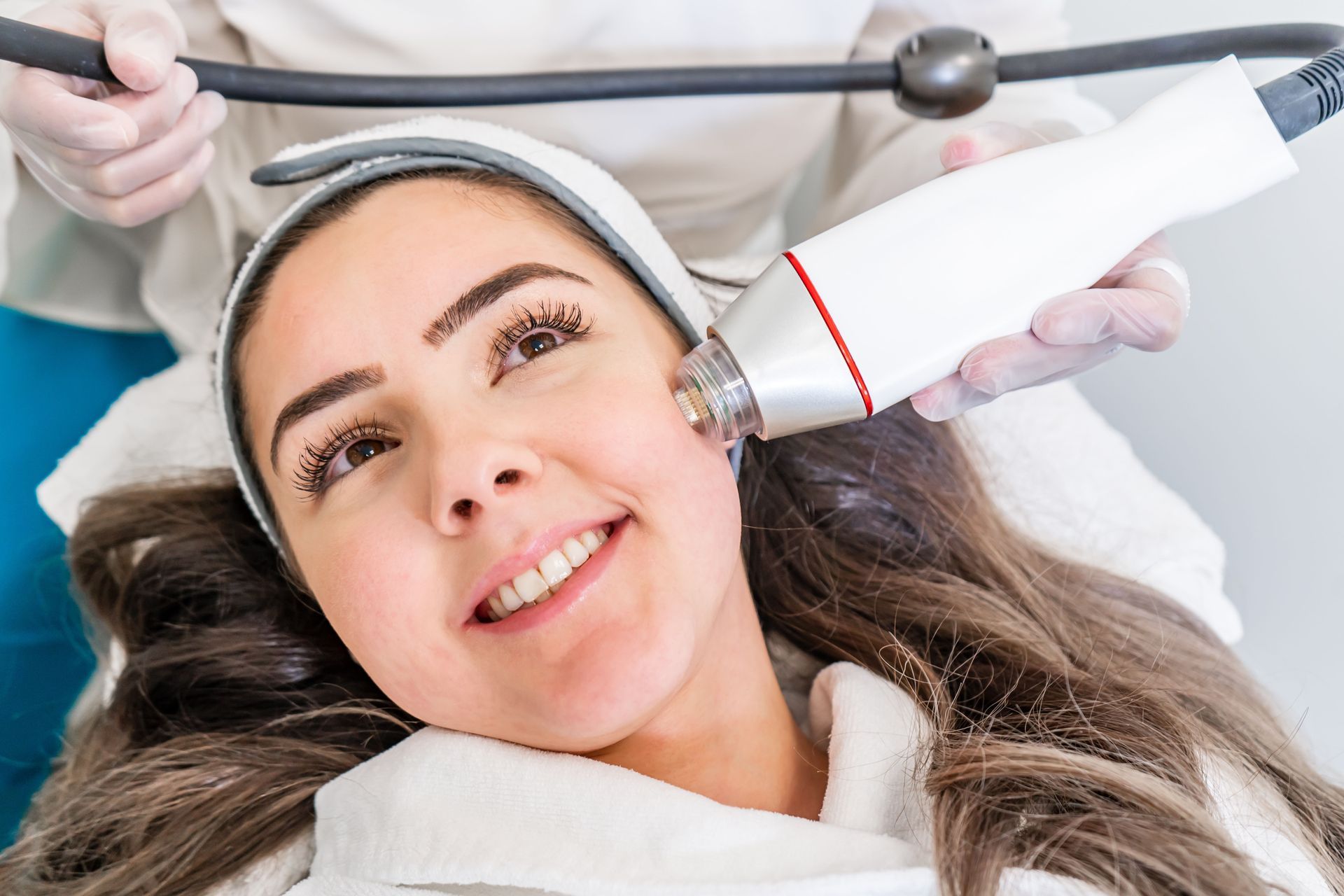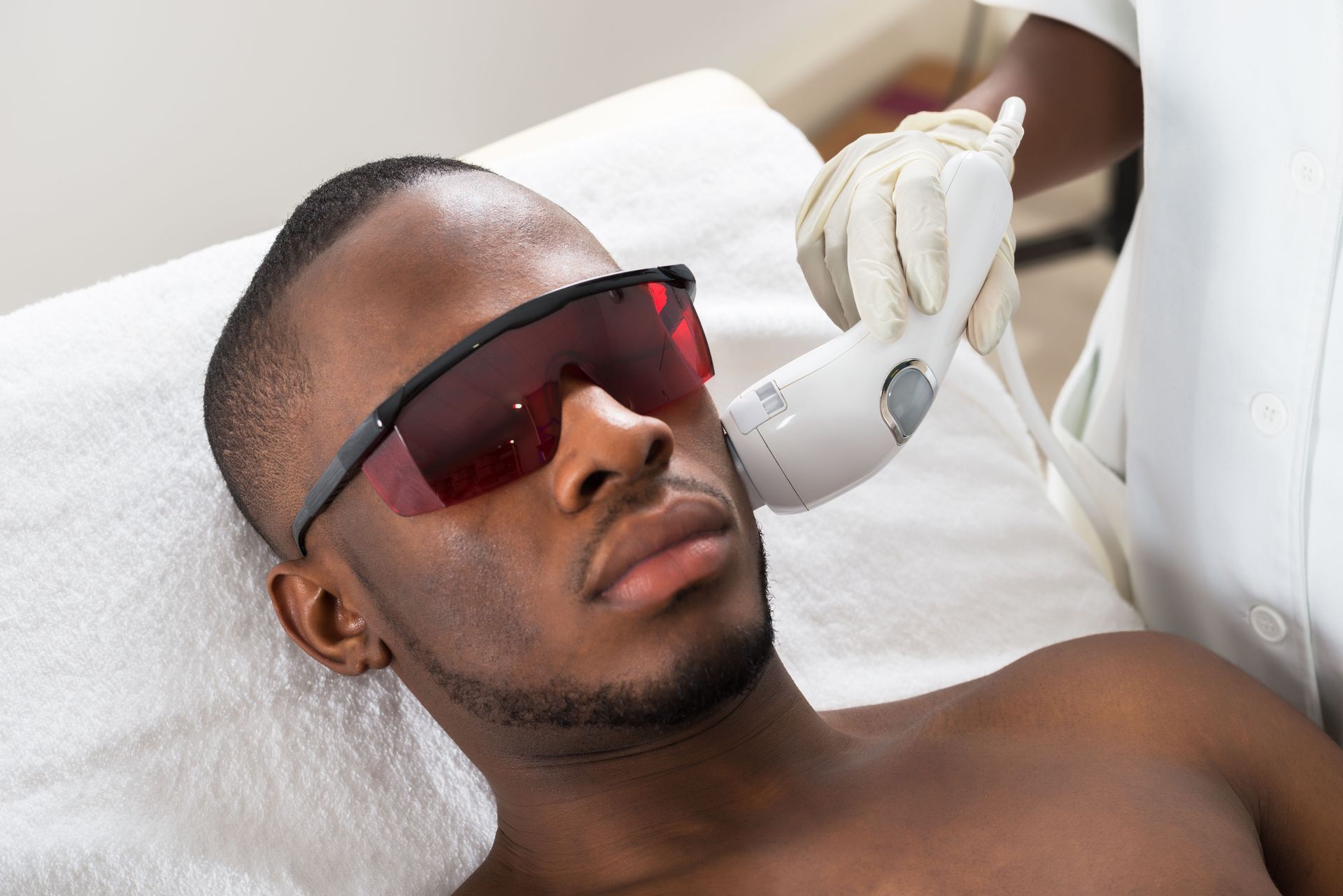What Technology or Devices Do You Use to Evaluate My Skin?
Highlights:
- Skin evaluation technology helps create customized treatment plans.
- Devices analyze hydration, pigmentation, pores, wrinkles, and elasticity.
- High-resolution imaging systems track progress over time.
- Accurate assessments improve treatment safety and results.
- At SKIN Lab Aesthetic Beauty Studio in Tupelo, MS, technology-driven consultations enhance patient confidence.
When booking an aesthetic consultation, many patients ask about the tools used to analyze their skin. Advanced technology allows providers to go beyond surface observation, giving a deeper view into hydration, pigmentation, elasticity, and other factors that influence treatment recommendations. At SKIN Lab Aesthetic Beauty Studio in Tupelo, MS, technology plays an important role in making consultations precise, personalized, and trustworthy. The right evaluation devices don't just improve diagnosis-they also help track progress and ensure treatments align with each patient's unique needs. This blog explains some of the most common technologies used for skin evaluation.
Digital Skin Analysis Systems
Digital skin analysis systems are among the most widely used devices in medical spas. These systems employ high-resolution imaging and multi-spectral light to capture detailed information about the skin's condition. They reveal underlying sun damage, pigmentation irregularities, clogged pores, and fine lines that might not be visible to the naked eye. According to the National Library of Medicine, imaging-based skin analysis provides a more objective and accurate assessment compared to traditional visual examination. By using these tools, providers can create treatment plans that target both visible concerns and hidden conditions, giving patients better long-term results.
FAQ
Will my skin analysis hurt?
No, most systems are non-invasive and feel like having your photo taken.
How long does a skin evaluation take?
Most imaging sessions last less than 15 minutes.
Can I see the results right away?
Yes, most devices provide immediate visual reports you can review with your provider.
Hydration and Elasticity Measurement Devices
Hydration and elasticity are critical markers of skin health, yet they cannot be measured through observation alone. Devices like corneometers and cutometers measure moisture levels and skin firmness by applying gentle suction or electrical currents to the skin's surface. According to the MDPI Journal of Cosmetics, corneometry offers a reliable method for tracking changes in hydration, particularly when patients are undergoing treatments like chemical peels or microneedling. By assessing hydration and elasticity, providers can recommend targeted treatments such as hydrating facials, collagen induction therapy, or topical regimens to restore balance and resilience.
UV and Pigmentation Analysis
Sun exposure contributes significantly to premature aging, pigmentation, and skin cancer risk. That's why many medical spas use UV photography and related devices to reveal sun damage not yet visible on the surface. This type of imaging highlights freckles, age spots, and areas of melanin concentration that may deepen without intervention. According to Skin Cancer Facts & Statistics, about 80 percent of visible skin aging in Caucasian women is caused by the sun, and exposure accumulates over time. The same source also states that only about 23 percent of lifetime UV exposure occurs by age 18 - meaning much of the damage is ongoing through adulthood. These tools allow providers to educate patients about sun safety while recommending treatments like laser therapy, brightening facials, or topical antioxidants.
FAQ
Why do I need UV skin imaging?
It shows damage you can't see yet, helping you prevent future skin concerns.
Is UV analysis safe?
Yes, the imaging uses controlled light levels designed for skin diagnostics.
Will this help with anti-aging plans?
Absolutely, identifying hidden pigmentation helps tailor long-term strategies.
Wrinkle and Texture Mapping Tools
Wrinkles, fine lines, and uneven texture are often the primary concerns patients bring to consultations. Specialized scanners measure wrinkle depth, pore size, and surface roughness with high precision. These maps provide a baseline that can be compared over time to show improvements after treatments like microneedling, radiofrequency, or injectables. Texture mapping also highlights areas needing exfoliation or hydration. Unlike guesswork, this quantitative data supports evidence-based treatment plans. Patients benefit by seeing measurable changes, which helps them feel confident in the chosen approach and reassured that their investment is achieving visible, trackable results.
Integration of Results into Personalized Care
One of the greatest benefits of modern skin evaluation technology is the ability to create customized care plans. By combining data from hydration meters, UV imaging, and wrinkle scanners, providers can prioritize treatments that address both immediate concerns and long-term health. This holistic approach means patients at SKIN Lab Aesthetic Beauty Studio in Tupelo, MS, receive personalized, comprehensive treatment recommendations designed to maximize results and maintain skin health over time.
FAQ
Can one device give me a complete skin evaluation?
No, most providers use a combination of tools for the best accuracy.
How often should I get a skin analysis?
Once or twice a year is ideal, or more often if undergoing treatments.
Will I receive a copy of my analysis?
Many medical spas provide printed or digital reports you can keep.
Why Technology Matters for Patients
Relying on technology for skin evaluation improves transparency and builds trust between patient and provider. Instead of vague descriptions, patients see visual data that explains why a specific treatment is recommended. This fosters confidence, reduces anxiety, and enhances satisfaction with the consultation process. In a market filled with many options, medical spas that invest in advanced devices demonstrate professionalism and commitment to patient care. By integrating technology-driven assessments, providers deliver not only better outcomes but also a more educational and empowering consultation experience for their patients.
When patients ask, "What technology or devices do you use to evaluate my skin?" they're really seeking reassurance that their concerns will be handled with precision and care. From digital skin analysis systems to hydration meters and UV imaging, these tools uncover issues the eye alone cannot detect. At SKIN Lab Aesthetic Beauty Studio in Tupelo, MS, consultations are elevated by using evidence-based technology that tailors every treatment plan. Patients leave not only with recommendations but also with confidence in their journey toward healthier, more radiant skin.
Patient Education Through Skin Imaging
Beyond diagnosis, technology-driven skin evaluations serve as an educational tool for patients. By seeing images of their pores, pigmentation, and sun damage, patients better understand the importance of prevention and maintenance. These visual reports transform the consultation from a one-sided recommendation into a two-way conversation where patients can ask questions about their unique skin needs. At SKIN Lab Aesthetic Beauty Studio in Tupelo, MS, staff use these images to walk patients through their results, helping them connect treatment recommendations with visible evidence. This process not only improves patient understanding but also builds confidence in following through with the proposed care plan. Patients often feel more motivated to stick to their skincare regimen when they can visually see what areas need attention and how progress develops over time.
Future Innovations in Skin Evaluation
Technology in aesthetic consultations continues to evolve, offering exciting possibilities for the future. Artificial intelligence is already being applied to imaging systems, allowing for faster detection of subtle changes and more precise tracking of treatment results. Wearable devices may soon measure hydration, elasticity, and sun exposure in real time, giving patients continuous feedback on their skin health. Clinics are also exploring cloud-based platforms that store long-term skin analysis data, enabling providers to compare results across multiple visits for even greater accuracy. These innovations will only enhance the personalized care that clinics like SKIN Lab Aesthetic Beauty Studio provide to patients in Tupelo, MS. By staying at the forefront of technological advances, patients can expect even more comprehensive consultations and treatment strategies tailored to their evolving skin concerns.






Share On: